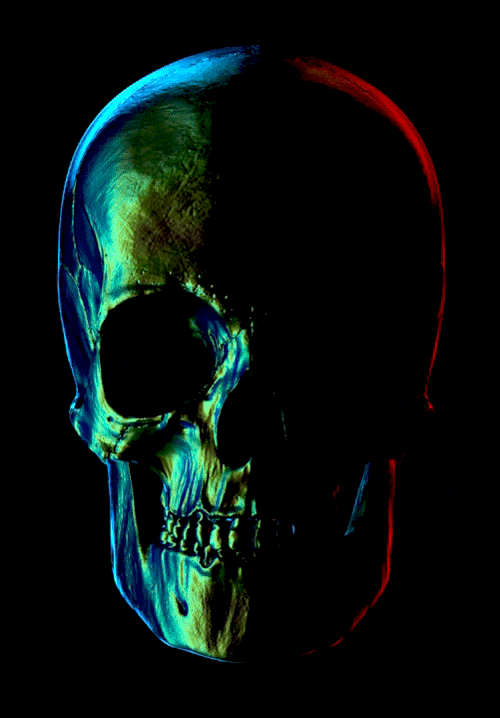#NWR
Explore tagged Tumblr posts
Text

Autumn atmosphere, Young coast of the Gulf of Finland, Saint Petersburg.
59,86516° С, 30,14901° В
926 notes
·
View notes
Text



The Neon Demon (2016) Nicolas Winding Refn
81 notes
·
View notes
Text

[2014]
One place that Stepney knew he had to visit was Edward's Station.
“Hello, Stepney,” Edward smiled. “Lovely to see you again.”
“You as well.” The diminutive tank engine smiled. “How have you been?”
“Everything has, on the whole, been quite enjoyable, thank you. There have been some hiccups, of course.”
“I heard about your ordeal in ‘65.” Stepney said, bringing the topic up with great caution.
“There's nothing I wouldn't do for our passengers.” Edward replied, simply.
“Well, you've certainly proven that.” The terrier replied, awestruck.
“I trust you've heard about BoCo as well?”
“Yes, I have. Is he here? I don't believe I've had the chance to meet him yet.”
“Unfortunately, he was called away with a goods train to the Mainland. Something to do with the Other Railway becoming short handed, or something like that.”
“A shame. I'd hoped to meet him while I was here. But at least I got to see you and Duck again.”
“How have things been on the Bluebell Railway?” Edward asked. “I recall a few other residents visiting us since you were last here.”
“I remember when Baxter visited here,” Stepney chuckled. “He came back cursing like a sailor about garden gnomes of all things.” He bit back another laugh. “I think he really enjoyed his time here.”
“Probably more than Cromford.” Edward sighed. “Poor engine got hit by several trucks of sugar while they were here.”
“Oof.”
“And what of the twins?” Stepney froze. “Bluebell and Primrose, the two tank engines that are “as like as two peas”?”
“Ah- they're…” Stepney bit his lip. “They're both doing alright.”
“I will say, I was surprised when Bluebell visited a few years ago without her sister.”
Stepney was nearly sweating bullets.
“I think Primrose was just in for repairs around that time.”
A white lie.
The signal dropped a moment later.
“Well, it was great catching up with you, Edward, but I ought to get going.”
“Of course. Enjoy the rest of your stay, Stepney!”
#ttte#thomas and friends#thomas the tank engine and friends#railway series#rws#nwr#ttte edward#rws stepney#ttte oc almond#bluebell railway
26 notes
·
View notes
Text
Sodor in the age of social media
1. Edward
Edward is perhaps not the type of engine you would expect to have an online presence, much less an active one, with a large following. However whilst he has never been a loud presence online, he has been consistent and beloved since nearly the beginning.
It began with a story.
In the early 2000s Edward's driver was at her whits end. Her toddler refused to fall asleep, instead crying throughout the night. The doctors all said she was healthy, that this was a phase, but the driver and her husband were exhausted. One august night, it was her turn to stay up with the toddler, she tried driving around, hoping the motion of the car would lull the child to sleep, but there was no luck. When she went to pass by the engine sheds, she turned in out of desperation. Edward was over 100 years old, maybe he knew what to do.
She entered the engine shed, finding all the engines awake. It is well known among railway men that any engine can pick out the cry of a child above any other sound, a fact that has proved both a blessing and a curse to their crews.
The exhausted woman climbed onto the bufferbeam gently shushing the child to no avail.
'Well hello little one."
The baby quieted, staring up in awe at the engine before her.
"Would you like a story little one?"
The toddler cooed and stretched a hand towards the giant face of the engine.
"Thomas was a little engine..."
The child was soothed by the elder engine's voice, and try as she might to fight it, she was soon asleep. The driver thanked the engine profusely, but he just chuckled and asked her to bring the child if it happened again.
Victoria Sand grew up on the buffer beam of her mother's engine, listening to stories of the railway, and her grandfather's time as driver.
In order to allow the engine sleep the mother recorded many of the stories, so they wouldn't have to disturb him to get the child to sleep, despite the engine's protests that he enjoyed their visits.
The years went on, and young Victoria began sleeping through the night (although there was more than one instance of her sneaking out to see her honorary grandfather.) The mother wished to help other mothers and fathers like herself so, with Edward's permission, she uploaded the stories to a video site.
"Storytime with Grandpa Edward" grew slowly but surely, as parents found them and played them for their children. As the videos popularity grew, many asked for Edward to read their children's favorite books.
It should be noted at this time, almost no one outside of the Island realized 'Grandpa Edward' was in fact a locomotive, much less Northwestern No.2. Victoria's father was an artist, and the videos consisted of Edward's voice over his paintings. Most of the audience had assumed Grandpa Edward was human. Upon the realization, Edward chuckled and asked it be kept that way, as he was touched so many people liked his stories on their own.
A young generation of children grew up listening to "Grandpa Edward" alongside Victoria Sand, some of whom would later visit Sodor. Whilst their parents would almost never recognize the engines voice over the sound of steam and metal, the children would. Edward would just laugh and ask for it to remain their secret.
The years passed, and the 2020s arrived. By this time "Grandpa Edward" was a household name for much of Britain, with thousands of stories recorded and released. Edward had declined in person interviews over the years, he was much too busy on his branchline after all. Despite helping to raise an entire generation, Grandpa Edward had remained a mysterious figure, known only by his stories, even as little Victoria grew up and became a mother herself.
The revelation of his identity involved certain blue tank engine, because of course it was. The sickness that must not be named had swept the globe. Sodor was weathering the storm well, as it had closed its borders promptly and thoroughly. Despite this, the children of the island grew stifled in their houses, missing school, their friends, and the freedom of the outside world.
The NWR came together to help in what ways they could. Thomas was ran from one side of the island to the other, making videos for children to watch, to show them that the world and their friends would still be there waiting for them when they came out. As expected, the 'Thomas touch' happened, and the videos seemed to explode overnight, with children around the world eagerly watching Thomas on his adventures around the Island. But Thomas was growing tired. He was older now, 106 thank you very much, and the constant longer runs were more than he was used to on his branchline.
Edward took one look at him one evening at Wellsworth as he waited for a clear signal to Ffarquhar, and promptly dragged Thomas and his coaches. Thomas protested, the kids needed the joy the videos brought.
"Leave it to me," Edward said.
The first video was simply titled 'Grandpa Edward reads Thomas a story.' The video opened to show Thomas and his coaches parked inside the Wellsworth Sheds, a fully grown Victoria holding the 'The Three Railway Engines' up for Grandpa Edward to read.
#ttte#rws#nwr#ttte edward#ttte thomas#storytime with edward#Sodor in the age of social media#this could be a series if y'all want
202 notes
·
View notes
Text

Sometimes you just gotta study the old masters y know
28 notes
·
View notes
Text
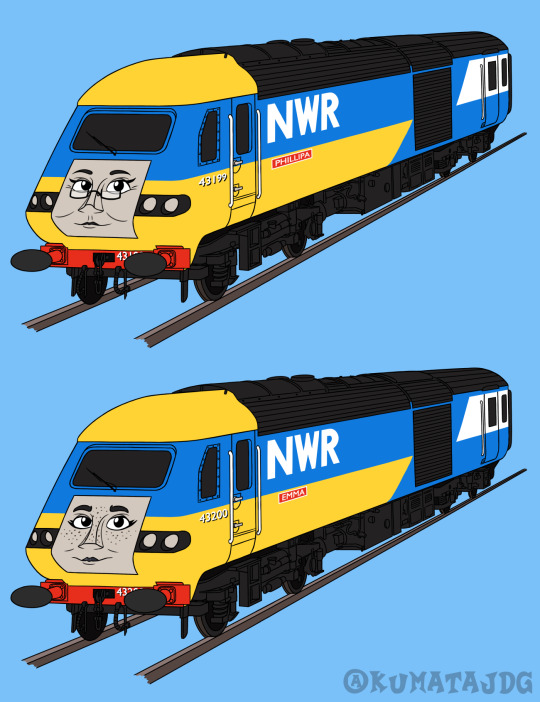
A flat colour commission for Twitter user @FoodieTheFox of Pip & Emma as they appear in his AU!
#Pip#Emma#NWR#Thomas the Tank Engine#TTTE#The Railway Series#RWS#HST#High-Speed train#Commission#Illustration#Locomotive
35 notes
·
View notes
Text

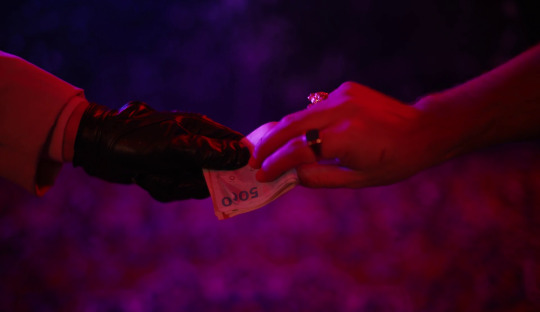
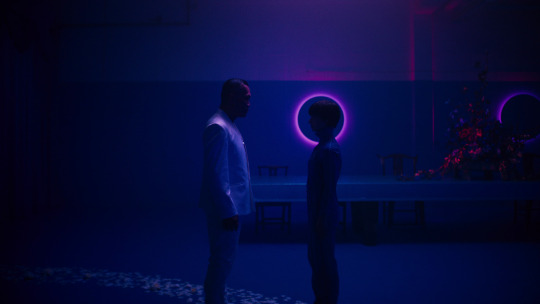


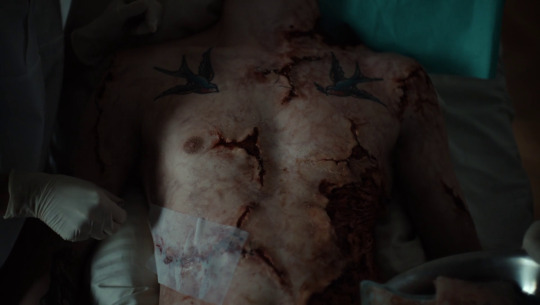
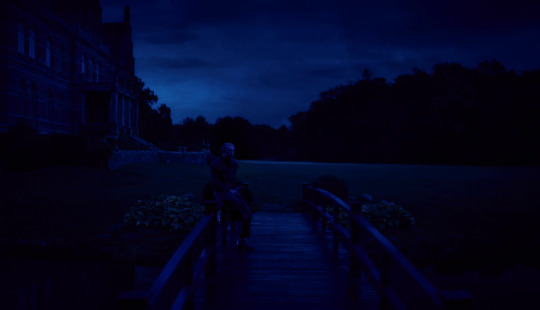


Copenhagen Cowboy (2023)
64 notes
·
View notes
Text
Sodor: 1965-2020
Back when I talked about how Sodor would fuel its railways in the 2010's (find that post here), I said I'd talk about how Sodor would remain profitable into the modern era.
Well, with Murdoch the Mighty Engine now completed (find that here) it's finally time to really dive into what kept Sodor moving throughout the latter half of the twentieth century and into the 21st.
I'm going to go in event order - and yes, this is all canon to my Extended Railway Series.
1965: Breaking Away From British Rail:
In 1965, British Railways was pretty desperate for money. And I mean it. The BTC was losing around £300,000 a day in 1961. The company was not able to pay its loans, and that led to desperation and the Beeching cuts.
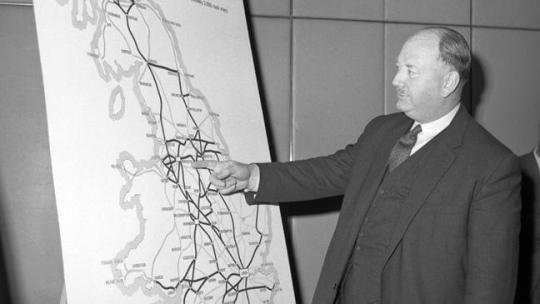
Sodor was at the time threatened with both the Peel Godred line and the Ffarquhar branch being drastically reduced in size or outright closed - and furthermore there was talk of Crovan's Gate Works being closed. The North Western Region was at the time chaired by Sir Charles Hatt, and he decided to take action.
This is where Sir Charles did perhaps the sneakiest piece of work in his entire career. For a man who was very above the board, this may come as a surprise.
Sir Charles was told by the BTC that if he could find 'the worth of the North-Western Region' - a number that they incorrectly overinflated to around £1,000,000. In comparison, 4472 Flying Scotsman cost £3,000 when bought by Alan Peglar.
Neither the NWR nor the Hatt family had that much money - and the railway, while profitable, did not make enough. So Sir Charles organised a secret backdoor deal with a different company to get the money.
Sir Charles went to the German Rail Company Deutsche Bundesbahn. He'd visited earlier that year and had witnessed the earliest development of the Linienzugbeeinflussung system (LZB) and had offered the Peel Godred branchline for further testing - only he needed the NWR to be independent before he could allow it, as BR didn't want anything to do with the tests.

The Deutsche Bundesbahn, ecstatic that someone wanted to basically hand over their railway to play guinea pig for a brand new untested system, forked over £1,000,000 in exchange for shares in the new NWR company and free access to the Peel Godred branch to test their LZB system.
Sir Charles Hatt gave British Railways the money, and on September 28th, the NWR was officially freed from BR, though the latter company got the rights to run trains to Tidmouth using their engines on 'trials'. The next day, Deutsche Bundesbahn was mysteriously given a massive share in the new company, and permission to test their new system.
1965-1979: Implementing LZB on Passenger Trains:
Siemens - the German company working with DB on their LZB system - opened a branch at Cronk to begin work on testing their LZB systems on the electric Peel Godred branch. Originally a hard-wired logic system only, testing on the Peel Godred and utilising the massive amount of energy harnessed at the hydroelectric dam, the system was quickly developed into a computer system.
While the Peel Godred electrics were able to handle the computers on board, the mainline proved to be a different challenge. Stephen Hatt, then working at Crovan's Gate to help him grow accustomed to the engines on the NWR, suggested renovating the old Mark I coaches BR was beginning to retire to have the LZB systems in them, connecting to the brake pipes. LZB coaches would have the letters 'LZB' printed on the front and sides of the coach to identify them.

On June 3rd, 1979, the last non-LZB passenger train left Tidmouth, a local train that ran as far as Cronk. From that point on, all passenger trains are meant to have an LZB coach at the front of the train, though there have been incidents were it was forgotten. When Pip and Emma were bought, LZB was placed straight in their cabs.
1966-1996: Modernising the Steam Fleet:
Edward went in for a heavy repair in 1965 after his 'exploit' and when he came out, he was a very different engine. The early stages of independence for the NWR were marked by very heavy tourist traffic. The Railway Series books were at the height of their popularity, and Sir Charles was finally free to advertise and profit from them. He organised a huge number of special trips throughout the latter half of 1965, culminating in Edward's infamous excursion. This raised enough money for the NWR to survive the winter season - and enough to begin modernising their steam fleet. Welding replaced riveting, and new superheaters and blastpipes were added. Edward was also the first NWR engine to gain roller bearings.
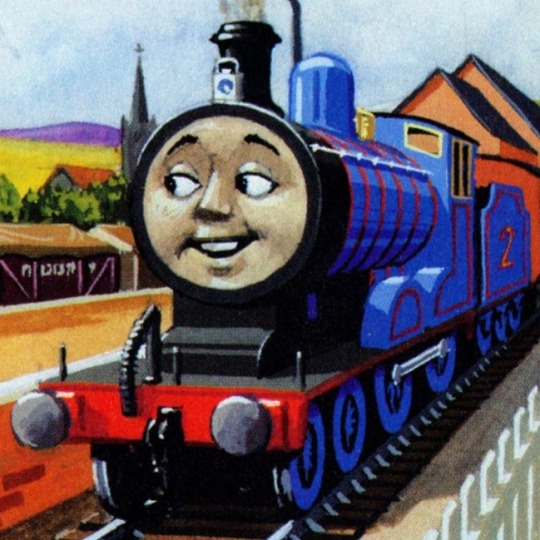
When Edward departed the Works in late 1966, he was much stronger than before, and certainly more capable! Oliver would gain the same upgrades upon arrival to the NWR, and over the next twelve years the entire rest of the fleet was rebuilt. New arrivals to the railway would undergo the same treatment, with Murdoch being gifted a kylchap blastpipe while being overhauled. Another factor of this period was extensive standardisation, which included funnel diameter, coupling rods, valve gear and cab window sizing.
Much of this ability to develop their steam engines came from the partnership with DB in Germany, which didn't withdraw its entire steam fleet until 1977.
1970-1996: Modernising the Diesel Fleet:
Starting in 1970, Sir Charles began to work on improving and standardising his fleet of diesel engines. BoCo, Bear and Daisy were all very different classes, and the cost of parts was beginning to mount, even after purchasing plenty of disposed parts from scrapyards across the country.
This was far more radical than what was done with the steam engines, and for good reason. While DB was the expert on Diesel-Hydraulic, it was also very expensive at a time when the NWR did not have all that much money to spare. The Little Western and Arlesdale Railway projects sucked up pretty much all the money the railway made at this time. So, they simply took the engines inside BoCo and Bear and replaced them. Entirely. Sir Charles bought excess Sulzer engines which were being fitted to the Class 47 and fitted them to his two big diesels. He did have to move... a lot of stuff internally - this was a rebuild unlike any other, and it kept them both out of service for a very long time. But by the end, he had forcibly standardised BoCo and Bear. Then Derek came along, and Sir Charles was forced to figure something else out for him. This was in the end achieved by taking the engines used by Daisy and jamming them into Derek. Except more of them, and turbocharged. Remarkably, this also worked (after a lot of screaming and huffing by the Crovan's Gate foreman!)
Bert, Diesel and Arry were far easier for Sir Charles and Sir Stephen, all being Class 08's and ubiquitous on BR. As they were retired, the NWR bought old engines and spare parts to repair their fleet.
Bowler and Spamcan would be given the same Sultzer engines as BoCo and Bear, as by this point the Class 47s were being retired on BR and there were plenty of spare parts available. Pip and Emma would retain their engines. Selector catalytic reduction (SCR) emissions reducers would be fitted to all diesel engines.
1975: NWR Holdings Inc:
In 1975, the NWR was incorporated alongside the Arlesdale and Skarloey Railways into NWR Holdings Inc, a new international stock company aimed at raising capital for the railways. First floated on Sodor, it attracted plenty of attention from locals, tourists and international companies alike. NWR Holdings would buy shares in various companies around the globe, including the American Railroad Union Pacific and in Danish shipping company Maersk. The Hatt family personally bought a massive number of shares in the company in what was potentially a highly-legally-questionable move. Still, NWR Holdings Inc would be chaired by Bridget Hatt from 1975 onwards and become a very profitable share-owning company.
1976: AWS and Air Brakes:
By 1976, all trains on the NWR were equipped with AWS and Air brakes, leading to a drastic reduction in accidents across the following years. While not a foolproof solution, when added to the new LZB system, it led to the NWR becoming one of the safest railways in all of England and Europe.
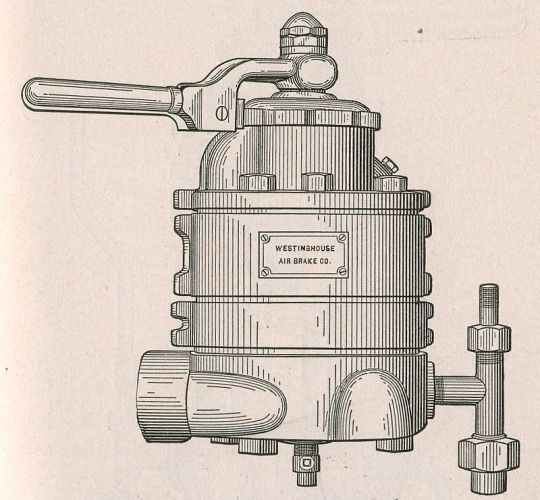
1985: Tourism Boom:
The NWR was inundated with traffic following the airing of the hit TV series 'Thomas & Friends' both in the UK and internationally, with the summer season of 1985 being perhaps the busiest in the island's history until that point, and a major victory for Sodor, which was now the most profitable railway region in Britain outside of London.
British Rail would attempt to force the NWR back into its company at this point, but the courts struck the case down due to the Tory Government disliking the idea of nationalising the network any further. This was the era when the Tory government began to privatise the various government agencies of the UK, and the NWR was upheld as a success of privatisation.
This tourism boom would have a major impact on the economy of Sodor too, with the service sector becoming central to the island's economy. The regional airport at Vicarstown was expanded to accept planes from as far away as Poland - something the NWR helped fund. This was incredibly well-timed, as the last of the mines on the island began to dry up around this time, and the new expanded service sector and transport sector used up much of these redundant miners.
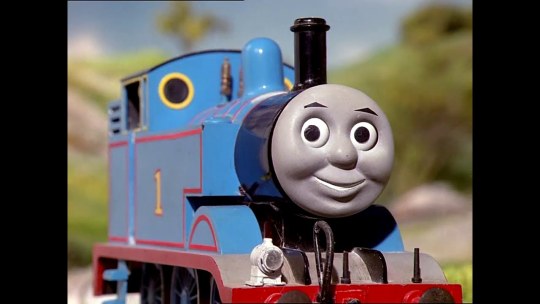
1993: Shares in Deutsche Bahn:
In 1992, Deutsche Bundesbahn began a merger with the Deutsche Reichsbahn to create the Deutsche Bahn in Germany. By this point, the NWR was an extremely profitable company and able to survive on its own, however it was also reliant on the DB for a reliable partner, especially as the UK was in the EU, and DB was able to offset much of the NWR's carbon emissions problems.
The NWR would put up a large sum of money - the modern equivalent of the £1,000,000 from 1965 - to prop up the company during the merger and managed to gain a healthy share out of the German rail company for its troubles. When the new Deutsche Bahn became public property all of five minutes later, the NWR kept its unique position, and the two became 'joint partners' - independent but aligned in much of their goals.
1994-1996: Expansion and the End of BR:
As explained in Modern Railway Engines, in 1994, the North Western Railway bought the Furness Line outright from British Rail. This included all stations, trackwork, and running rights. NWR trains now terminated at Lancaster on the West Coast Mainline, buying up platforms 5 and 6 at the station. the NWR now was directly connected to the WCML, and gained two mainline diesels, a HST and three shunting engines in the deal.

By 1996, these new engines had settled into their roles on the NWR, and the railway was well positioned for the turn of the century. The freight services along the NWR mainline would be fitted with LZB at this point, and further increase the safety of the entire network.
2007: Buyout of EWS:
In 2007, the British railfreight company EWS was bought out by Deutsche Bahn and NWR Holdings Inc as part of a joint-takeover of the freight sector of Britain's Railways after repeated issues with the company. The NWR and DB had very different designs on the company, however the NWR would triumph, and a period of drastic overhaul would occur over the next ten years. In 2017, DB Cargo UK would have rebuilt its entire fleet of Class 90s and Class 92s, as well as all 67s, 66s and 60s. The company would sell off a large number of unusable engines to other companies; but retain the Class 47s and rebuild them into class 57s.
This huge takeover by the two companies would have major implications for the NWR fleet, which only barely managed to keep their own freight services on Sodor from being added to the new DB Cargo UK company. Instead, traffic was streamlined across the two companies, and a direct freight service would commence between Carnforth and Wroclaw, Poland.
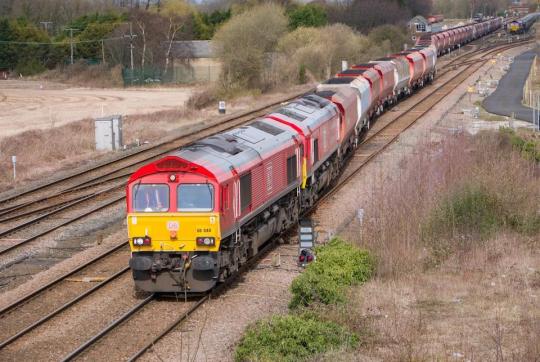
2012: Alternate Fuel Trials Begin:
As global warming became more prevalent, the NWR was criticised for its use of coal and diesel fuel. In response, the NWR began trials with several different alternatives, including E-Coal, torrefied rapeseed biofuel and 'electric steam'. Smaller engines like Neil were trialled with electric boilers to heat steam - and this led to the conversion of many smaller tank engines to the system, which was powered by electricity and thus extremely environmentally friendly (in theory). Other changes included solar panels installed on sheds and stations across the NWR and electric pre-heaters added to the steam engine boilers - something the NWR had been slowly working on since the mid-70s.
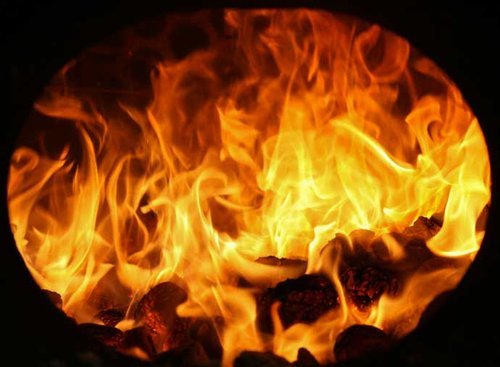
Torrefiers would be built by the NWR in 2014 to convert biomass into fuel for engines, and trials would be conducted with Murdoch - who had the largest firebox - throughout 2015. Torrefied rapeseed biofuel pellets would be used on some services from 2016 onwards, as Sodor led world research into the issue. However, its weakness to rain and its smell would keep it being used only on freight services, with a tarp pulled over the 'coal' pile to keep it dry.
2020: Global Pandemic and Coal Shortages:
In the modern era, the North Western Railway continues to be a profitable and successful company, providing services across the Island of Sodor and around the globe. The Covid Pandemic saw all but the most essential trains cancelled, including all of the extremely profitable tourist traffic Sodor relies on. For a few months, the railway was even divided into two, with Sodor services terminating at Vicarstown and Furness services terminating at Barrow. A number of engines were stored for the year, being reintroduced as Christmas approached and traffic began to pick up again into 2021.
Worse yet, coal shortages caused by the closure of most British coal mines and crises in Eastern Europe led the NWR to speed up its biofuel research, with most medium-sized engines (Edward, James, Emily, Arthur, Molly) being converted to burn biofuel by the end of 2022. Only the largest steam engines on the NWR and the diesels use fossil fuels as of the time of writing, due to the extremely successful implementation of biofuel, much of which is now grown on Sodor to provide for the NWR and other heritage railways, such as the Talyllyn in Wales.
Wow... that was a long post. As usual, no pictures belong to me, and I headcanoned basically all of this. I just love the idea of the NWR using everything at their disposal to work their way up from the grassroots railway we saw in the Three Railway Engines into a massive corporation that still has that grassroots feel to it... and a multinational holdings company reporting massive profits.
Thank you for reading this massive thing!
#railway series#thomas the tank engine#ao3 stuff#ttte au#railways#ao3 link#sodor#island of sodor#Sodor 1965-2020#biodiesel#electric steam#LZB#Linienzugbeeinflussung#deutsche bahn#nwr#ttte edward#ttte murdoch#ttte Class 40#ttte james#ttte analysis#analysis#british railways#british rail#sir topham hatt#Sir Stephen Hatt#Bridget Hatt#ao3 author#fanfiction writer#long reads#long post
93 notes
·
View notes
Text



A few day's collection ! Gulf of Finland, South.
59,86234° С, 30,14172° В
14 notes
·
View notes
Text
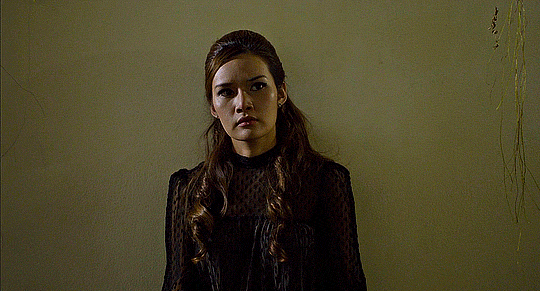
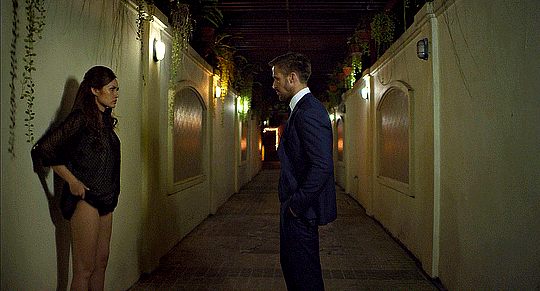

Only God Forgives (2013) Nicolas Winding Refn
#only god forgives#nwr#nicolas winding refn#ryan gosling#yayaying rhatha phongam#mygifs#gifset#gif#filmedit#take it off!
127 notes
·
View notes
Text

Kodiak National Wildlife Refuge, Alaska. 2024.
12 notes
·
View notes
Text
..Me, showing my ~♡Bestie♡~ the most fucked up kinky shit...

..and horrors beyond perception in public... ♡
36 notes
·
View notes
Text
Sodor in the age of scoial media
Sodor in the age of social Media
2. Henry
Henry was perhaps the slowest of the famous eight to adapt to the internet. Henry prefers to spend his free time in quiet nature, and the internet had little appeal to him. He would occasionally post inline about some mishap that befell his shedmates, but was largely inactive till the early 2000s.
In 2005 Cyclone Gudrun flooded the North Western coast, which was home to a large part of the Island's population of the endangered Welsh Pine Martin. He worried endlessly for several days. It came to a head one night when Gordon finally snapped. The express engine was sympathetic, but days of evacuation and emergency supply trains had left the mighty pacific sleep deprived and irritable. He had been looking forward to his well deserved sleep, and Henry's rambling was keeping him awake.
"Henry my dear engine, the poor Pine Martians.."
"Pine Martins"
"...Indeed. The poor Pine Martins have my deepest sympathies, but I am desperately in need of sleep, and since it has escaped your notice, all of us here are engines, with little ability to help the creatures even if we had the time."
Henry's face fell, leaving Gordon feeling as if he had kicked an 80 ton puppy.
The No.4 sighed, and turned his attention to the problem, "what is it they need?"
"Pardon?"
Gordon eyed the 4-6-0 grumpily, "What is needed to save the creatures, as I am quite certain you will not be able to rest until something is done. The last thing needed right now is for you to have an accident because you went without sleep."
"One would think you hadn't been listening to him at all these last few days." James snarked from Gordon's opposite side.
"Listening and understanding are not the same thing Little James. I understand the Martins homes are flooded, and they are already quite rare, but I do not know what can or should be done to remedy their plight."
Henry considered his pseudo cousin. "We need volunteers mainly, to search for Martins displaced by the storm, and the funds to care for them until they can be returned to the forest once the flood waters. recede." He paused thoughtfully , "The main problem is people don't know. All the focus is in the displaced people. Which that is just as important but..."
"Post it." Gordon interupted.
"What?" James asked.
Gordon sighed, "Post the situation online. When a engine in the mainland needs funds for overhaul, they often ask for Thomas to make a post online to raise awareness. I do not see why you could not do the same for the Pine Martins. We will all share the post as well so more people will see it."
Several engines stared at the Pacific, but Henry slowly started to smile, "Really? You would do that."
Gordon hrmped, "I can spare a few moments to help the critters so we can all finally sleep. When I see little Thomas tomorrow I will ask him to share it as well."
It should come as no surprise that having Thomas the Tank Engine ask for help saving cute little creatures with wide pleading ideas was just as effective as a full broadside from HMS Hood. Volunteers and funds poured in, and a foundation was quickly established to help look after the Islands population of Pine Martins, but this gave Henry an Idea.
Henry began to chronicle his encounters with Sodor wildlife, his crew helpfully taking videos, which he would post as he read descriptions of the animals. This quickly gained traction (and followers.) Children loved listening to one of the Famous Eight talking about new animals.
In 2007, the newly prosperous Sodor Conservation Society officially partnered with Henry, and began an online docuseries about the endangered animals of Sodor. The Series, aptly named Preservation and Conservation, would become a run away success. Series Three saw the series leave Sodor (although their steam powered narrator remained on the island), with Series four and beyond playing on the BBC in Britain, and Series Five and beyond playing on PBS in the United States. Preservation and Conservation is now on its sixteenth series, with series 18 greenlit.
Henry is now the Mascot and board director of the SCS, and a well respected figure in ecological conservation. From 2008 onwards he has carried the society's emblem on the side of his cab.
If you find his pages online these days, Henry can be found documenting the animals and plants he sees on his daily runs, and. Occasionally documeting the hijinx of his fleetmates as well (most notably the time James got sprayed by a skunk during the filming of series 7) While more Niche than many of the other online engines in the North Western fleets, Henry would argue his online presence is one of the most important.
92 notes
·
View notes


